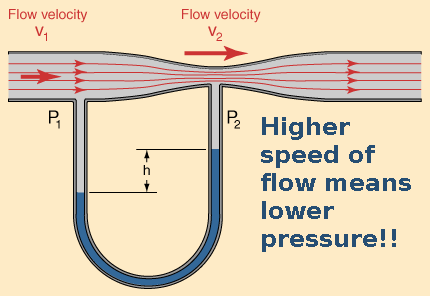Introduction
Within a fluid flowing horizontally, the highest speed occurs where the pressure is lowest, and the lowest speed occurs where the pressure is highest. Why?

In fluid mechanics, Bernoulli’s principle states that, in a steady flow, the sum of all forms of energy in a fluid () along a streamline remains constant. The forms of energy involves the kinetic energy, the potential energy and the internal energy. Bernoulli’s principle can also be derived directly from Newton’s Second Law of Motion.
- kinetic energy: dynamic pressure ()
- potential energy: static pressure, including the gravitational potential
- internal energy: heat
The principle is named after Daniel Bernoulli who published it in his book Hydrodynamica in 1738. Leonhard Euler derived Bernoulli’s equation in its usual form in 1752.
The principle is only applicable for isentropic flows: when the effects of irreversible processes (like turbulence) and non-adiabatic processes (e.g. heat radiation) are small and can be neglected.
Pressure classification
Static pressure
Dynamic pressure
Total pressure
static pressure + dynamic pressure = total pressure
Hydrostaic pressure (gravitational potential)
